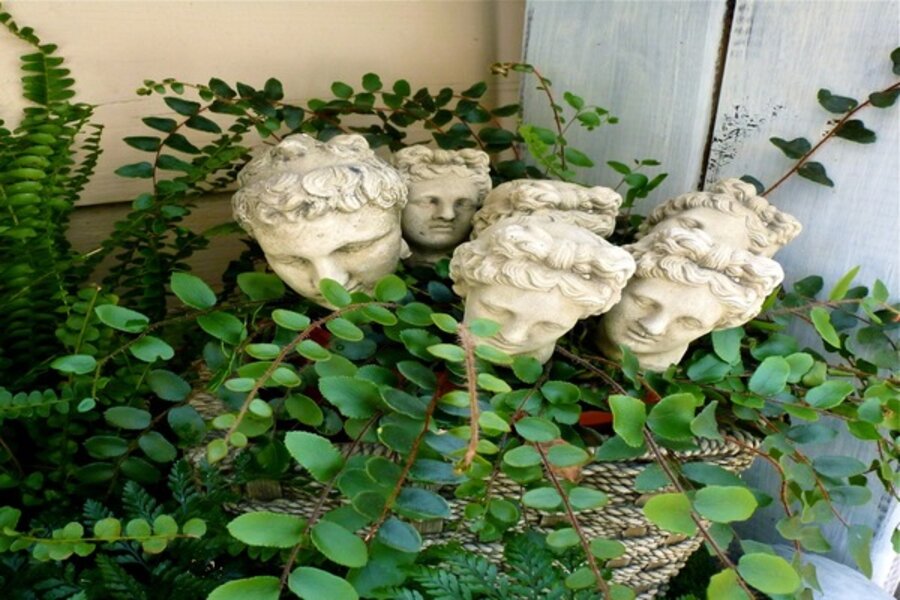How to successfully grow ferns indoors
Loading...
Scientists tell us that ferns have been around for as long as 400 million years. Eons ago, before much of anything interesting existed, ferns covered much of the prehistoric terrain. In the company of club moss, horsetails, and other ancient plants, ferns flourished, died, and decayed, creating a cycle that possibly contributed to the formation of rich coal deposits.
Because they were hardy and adaptable, ferns evolved in all but the world’s most hostile climates. Along the way, a host of diverse varieties appeared -- some were water babies, others epiphytic, deriving moisture and nutrients from the air and rain.
More than 10,000 species of ferns have been identified, and many more await discovery. Approximately 200 species, including the familiar Christmas fern, still populate the temperate areas of the United States.
Prior to the 18th century, naturalists knew little about the intimate activities of ferns. Spores were not associated with reproduction, and since no one ever observed any seeds, people concluded ferns possessed supernatural powers.
Why some thrive and others don't
Today, for the most part, ferns are valued as airy, ornamental accents -- when they decide to cooperate. Modern in-house fern cultivation is about as predictable as it was in the 1840s when plant enthusiasts first attempted to grow ferns indoors. The Victorians quickly discovered what we know all too well in 2013: Some ferns make it; others don’t.
So if ferns have been around for more than 400 million years, why can’t most of us keep one looking good for more than a few weeks?
The answer isn’t as complicated as it seems. The fact is we can successfully raise ferns -- if and when. If we have the proper light, and when we select the right plant. If we provide adequate humidity and when we water at the correct times.
It can be a delicate balancing act.
Good light and humidity
Experts agree that light and humidity are the keys to success. In most homes across the country, humidity levels hover around 25 percent. A 40 to 75 percent level is necessary to keep ferns fit.
In addition, ferns despise cave-like conditions. They need light -- bright light -- and a dose of liquid houseplant fertilizer monthly except in winter.
In choosing the right home for your ferns, your best bet is a well-lit bathroom. The Boston, staghorn, maidenhair, button, petticoat, and “footed” ferns are all ideal for the bath area. The Boston fern and rabbit’s-foot fern in particular will thrive in a bathroom with good Southern exposure.
In other areas of the house, choose a window with bright afternoon sun and set the plant on a tray of pebbles to increase humidity. The tray should be as big as the spread of the plant so water can evaporate around the leaves. For homes with bright morning light, the bird’s-nest and holly fern are good choices.
How to water
Once you have the right humidity, the right light and the right fern, you must tackle the tricky watering problem. Plant manuals plainly state that when leaves turn yellow or brown, the fern is a victim of over- or underwatering. Which one? You can either cut back or step up your watering program. If the plant dies, you guessed wrong.
To avoid these problems, try filling your plant saucer to the brim with water, then let your fern sip it up all week. Since most ferns come from moist environments, they don’t mind having their feet wet.
As an alternate method, water your plants thoroughly until the excess runs into the saucer two or three times a week. Whichever method you choose, mist your plants occasionally and be sure to give them a dose of fish emulsion monthly. They’ll thank you for it.
Ferns can be fussy and challenging. But even if your plant winds up looking like a faded watercolor, it's likely that you’ll want to try again.
Hope triumphs because ferns are beautiful, they’re unique, andno summer porch is truly complete without the delicate presence of at least one Boston fern.
Mostly, we will keep attempting to tame the fern because, despite our 21st-century know-how, there is something magical about a plant that has survived since long before the dinosaurs.
And no doubt, with or without our help, ferns will be around for another 400 million years.
-----
Lynn Hunt, the Rose Whisperer blogs regularly at Diggin' It. She's an accredited horticultural judge and a Consulting Rosarian Emeritus for the American Rose Society. She has won dozens of awards for her writing in newspapers, magazines, and television. After a recent move, she grows roses and other plants in her garden in the mountains of western North Carolina.. To read more by Lynn here at the Monitor, click here.You can also follow her on Twitter and read her Dirt Diaries





